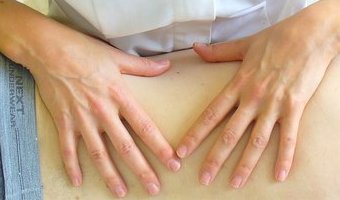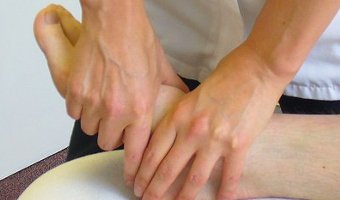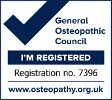Frozen shoulder
Another condition which I seem to be seeing more people presenting to me with recently is ‘frozen shoulder’. Frozen shoulder (adhesive capsulitis) is a relatively common (2% of the population), disabling, painful loss of shoulder movement. The ‘adhesive’ part of this term is incorrect however as the tissues of fibrous capsule don’t get stuck, rather they thicken and shrink into a contracted state.
It’s unknown as to why frozen shoulders develop, but it occurs more commonly in those with diabetes and who are aged over 40. It is associated with immobility or underuse of the shoulder (instead of the more common overuse injury such as a repetitive strain injury).
The theory is that the human shoulder evolved for high speed projectile throwing and it suffers neglect in modern living. Sedentary tissues are more vulnerable to biological failure and, a little more controversially, it is proposed that the brain may react to overuse of a weak tendon (of which there are many in the shoulder) with fear avoidance of movement which creates a cycle of painful inhibition and function. This is where the shoulder is functionally frozen by neurological inhibition – a reluctance to move rather than a sticky joint capsule. Indeed, when patients went under general anaesthetic for capsular release surgery, a number of them had significantly more passive shoulder abduction that they had before they were anesthetised – which would be impossible if their capsules were actually contractured or adhered or had any physical limitation. It seems that stiffness and muscle guarding is a major contributing factor to reduced range of motion in patients with frozen shoulder.
Frozen shoulders do thaw but it can take up to 2 years to go through the freezing, frozen and thawing stages (textbook is 6 months for each stage but is anecdotally more). They are often confused with other conditions of the shoulder (as discussed, particularly with repetitive strain injuries) such as:
- Rotator cuff tendinopathy or tear – the rotator cuff is a group of four muscles which overlaps the joint capsule which gets inflamed in frozen shoulder. These problems usually limit active movement, whereas frozen shoulders are frozen even when you are relaxed and someone else tries to move your shoulder you (passive movement). Pain is also limited to more specific spots and movements than frozen shoulder with tears happening with exertion.
- Tendinitis of the biceps tendon – pain is on the front of the shoulder only with contraction of the biceps being painful and other movements are normal.
- Subacromial and subdeltoid bursitis (similar to the rotator cuff tendinopathy but the padding between tendons and other structures instead).
- Acromioclavicular arthropathy – usually overuse degeneration of the joint at the outside end of the collar bone with specific pain to that joint.
- Cervical disk degeneration – symptoms also occur in the hand and wrist and are usually more prominent.
So what do you do if you think you’ve got a frozen shoulder? GPs might give you medication and may refer you the physio or for an XRay – which can be a useful way of excluding shoulder joint arthritis or scary causes of pain like a tumour but, then again, frozen shoulder is quite distinctive clinically so often an XRay isn’t required. Then the GP may refer you to an orthopoedic consultant. The consultant can arrange cortisone injections into the joint or occasionally arthrographic distentions (fluid injected into the joint to break up adhesions), both of which provide short term relief (up to 4 months).
It’s usually once the patient has gone out the other side of the GP/specialist consultant process a long time down the road with the symptoms that they come to me (or other colleagues) for Osteopathic treatment. Against conventional wisdom, frozen shoulders do not follow a predictable timeline and, in the main, they are not self-limiting.
What seems to help (self-help or Osteopathic treatment)?
- Early use-it-or-lose-it interventions to preserve range of motion
- These exercises are helpful if you are in the early (or the middle but taking it easy) stages of frozen shoulder – CLICK HERE
- Strengthening: Remember that weakness is not the problem with frozen shoulder so overly zealous strengthening exercises are not therapeutic and can aggravate the problem. Therefore avoid strength training during the freezing stage but do it any time after that… any exercise that involves the shoulder where you wear out your muscles a bit, 2 or 3 times a week, to provide stimulus which might be therapeutic.
- Stretching: Like strengthening, go very easy if at all during the freezing stage (stick to the pain-free range) and beyond that find your end of range of motion and push against it lightly and less frequently at first building up if it causes no trouble.
- Take up an activity you enjoy that requires extensive shoulder range of motion
- If you get to the point you can’t move it, visualise movement. As this problem is both physical and neurological, preserve the neurological if you can’t preserve the physical.
- Trigger point (very sensitive areas of muscle) release
- Mobilising and massaging the areas around the shoulder – particularly the shoulder girdle, thoracic spine and the neck and reducing the neurological inhibition through soft-tissue massage, stretching, articulation and joint release as appropriate.
- NSAID (non-steroidal anti-inflammatory) medication – aspirin, ibuprofen or naproxen – can be used for emergency use when most desperately needed. Be aware of the contra-indications.
- Anti-inflammatory diet? Contentious but may be helpful.







